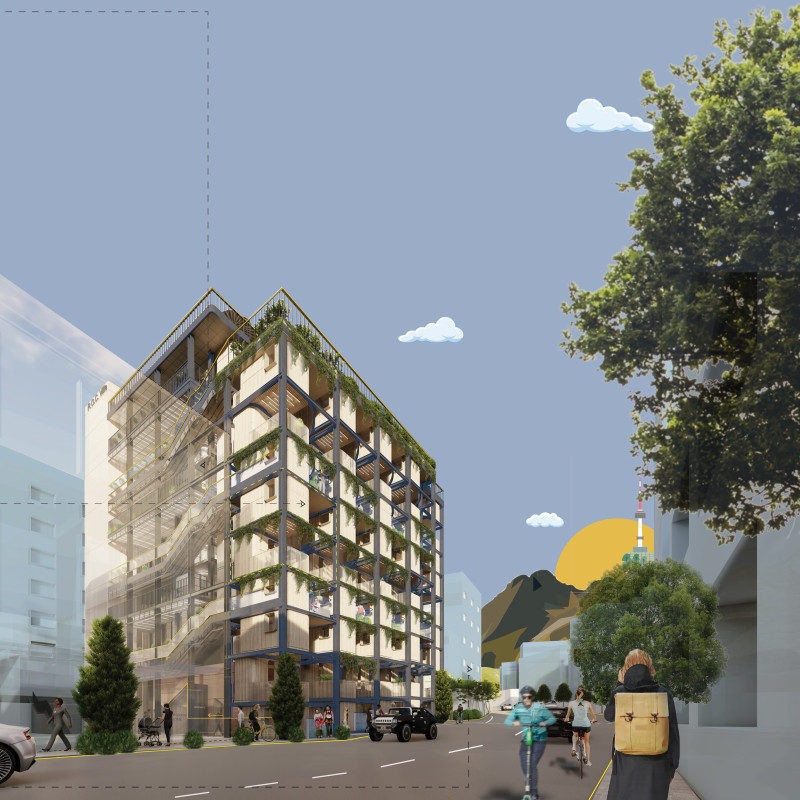5 key facts about this project
R.O.C. Ville is a unique residential development located in Pildong-ro, Seoul, designed to meet the needs of urban living. It features a multi-story layout that prioritizes modular units, known as 'Cells,' which can be stacked and rotated for better functionality. The aim is to create a living environment that maximizes space and encourages community engagement among residents.
Design Concept
The project's concept revolves around flexibility and sustainability. Each living unit covers 8 square meters, making efficient use of vertical space. The design challenges conventional ideas around home size and functionality by allowing for greater density without compromising comfort. This approach helps the building relate better to its surroundings while addressing the housing demand in the area.
Community Spaces
At the center of R.O.C. Ville are communal areas designed for social interaction. The rooftop Green Park offers space for various activities such as barbeques and outdoor sports. This area serves as a gathering place for residents, helping to foster friendships and a sense of community, providing an oasis in the busy city.
Circulation and Accessibility
Movement throughout R.O.C. Ville is thoughtfully planned to encourage activity and accessibility. Ramps link different levels of the building, allowing residents to navigate with ease. This design choice makes the environment friendly for everyone, promoting walking and even jogging within the complex.
Innovative Features
A key highlight of the building is the rotating floors, which revolve around a central staircase. This feature creates terraces that enhance the outdoor spaces available to residents while providing expansive views, including sights of Namsan Tower. The rotation adds another layer of utility, making the outdoor areas more inviting and functional.
Materials for the structure include wooden boxes, stacked up to three floors, and supported by a steel frame. This choice of materials balances durability with a warm aesthetic, contributing positively to the urban setting of Seoul.





















































